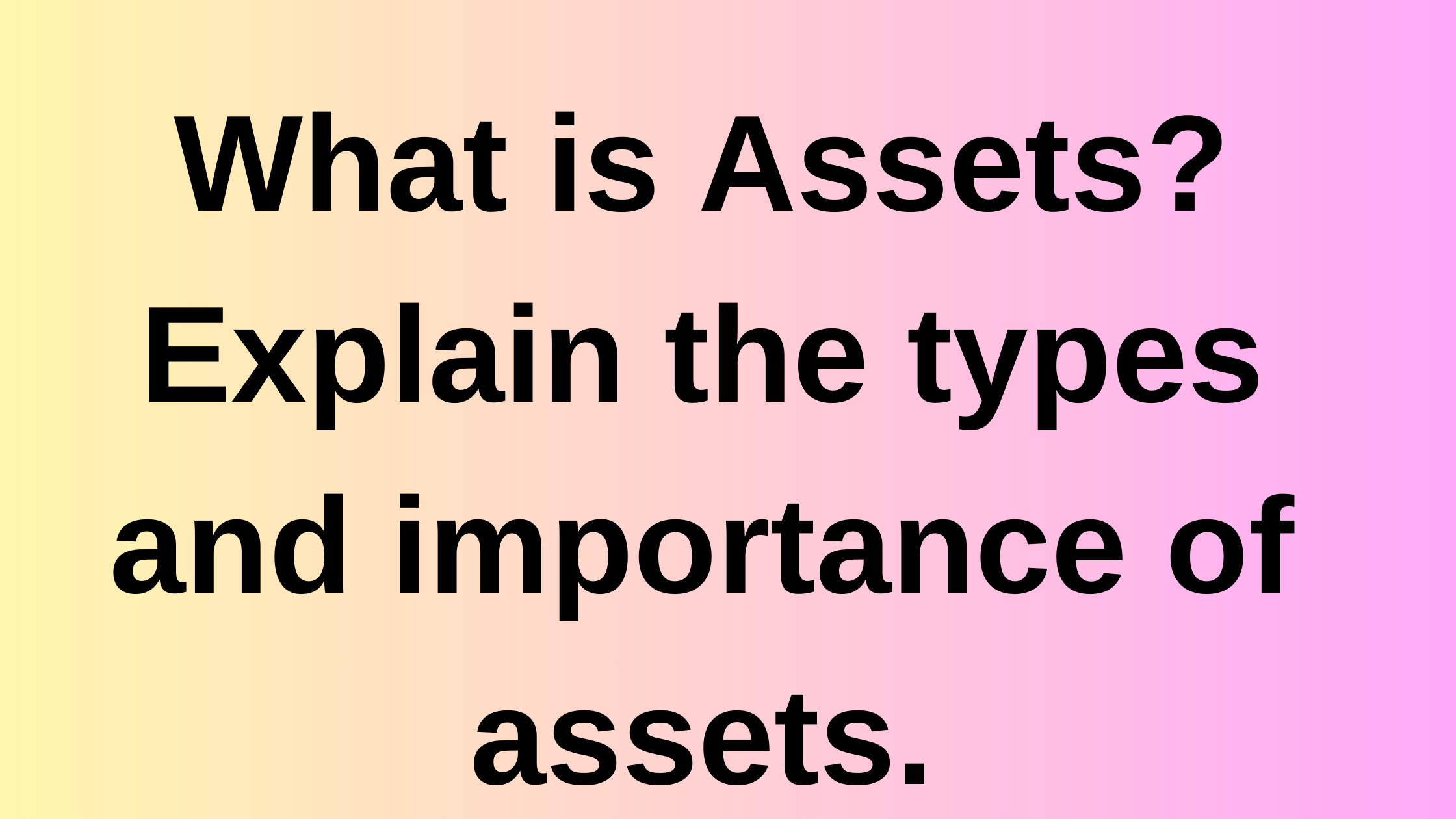
Assets are resources that are owned by individuals or organizations that have the potential to generate income in the future. In simpler terms, an asset is anything that can produce value over time. Assets can be tangible or intangible and can range from physical property like real estate, equipment, and vehicles to financial assets like stocks, bonds, and cash. In this article, we will explore the different types of assets, their importance, and how they are used in personal and business finance.
Types of Assets
Tangible assets are physical assets that can be touched and felt. These include real estate, equipment, machinery, and vehicles. Tangible assets are commonly used in business and can be depreciated over time, meaning their value decreases as they age.
Intangible assets are non-physical assets that cannot be touched or felt. These include intellectual property like patents, copyrights, and trademarks, as well as goodwill and brand recognition. Intangible assets are often more difficult to value than tangible assets but can be just as valuable, if not more so.
Financial Assets:
Financial assets are assets that represent ownership in a company or financial instrument. These include stocks, bonds, mutual funds, and other financial securities. Financial assets are often traded on financial markets and can provide a return on investment through dividends or capital gains.
Importance of Assets
Assets are important because they represent potential future value. They can be used to generate income, provide security or access to credit, and can be sold or exchanged for other assets. For individuals, assets like real estate and financial investments can provide a source of income and a way to build wealth over time. For businesses, assets like equipment and machinery can increase productivity and efficiency, while financial assets can provide access to capital for growth and expansion.
Using Assets in Personal Finance
In personal finance, assets are used to build wealth and provide financial security. One of the most common ways to build wealth through assets is through real estate direct mail marketing. Purchasing a home or investment property can provide a source of rental income and can appreciate in value over time. You can rent out your investment property for on airbnb and there are local management companies worldwide like Airbnb Management London who takes care of everything from listing to guest check-ins and check outs and photography etc. Financial assets like stocks, bonds, and mutual funds can also provide a return on investment over time and can be used to save for retirement or other long-term goals.
Using Assets in Business Finance
In business finance, assets are used to increase productivity, efficiency, and profitability. Tangible assets like equipment and machinery can increase output and reduce costs over time, while financial assets like stocks and bonds can provide access to capital for growth and expansion. Intangible assets like patents and trademarks can also provide a competitive advantage and increase the value of a business.
A money mentor can guide businesses in effectively managing these assets, offering valuable insights on optimizing resource allocation and ensuring long-term financial stability.
Involves evaluating the value of assets, enhancing the asset value by proper interior design planning.
Managing Assets
Managing assets is an important part of personal and business finance. Effective asset management involves evaluating the value of assets, determining how they are being used, and making decisions about when to buy, sell, or hold onto assets. In personal finance, this might involve developing an investment strategy that balances risk and return, while in business finance, it might involve evaluating the return on investment of different assets and determining which investments will provide the most value over time.
Conclusion
Assets are an important part of personal and business finance. They represent potential future value and can be used to generate income, provide security or access to credit, and can be sold or exchanged for other assets. Different types of assets include tangible assets like real estate and equipment, intangible assets like intellectual property and brand recognition, and financial assets like stocks and bonds. Effective asset management involves evaluating the value of assets, determining how they are being used, and making decisions about when to buy, sell, or hold onto assets. By understanding the different types of assets and their potential value, individuals and businesses can make informed decisions about how to use their assets to achieve their financial goals.
In addition to managing assets, it's also important to protect them. Tangible assets like real estate and equipment can be insured against damage or loss, while financial assets like stocks and bonds can be held in secure accounts. Intangible assets like intellectual property and brand recognition can be protected through patents, copyrights, and trademarks.
Overall, assets are a crucial aspect of personal and business finance. By understanding the different types of assets, their potential value, and how to manage and protect them, individuals and businesses can build wealth, achieve financial security, and reach their long-term financial goals.


